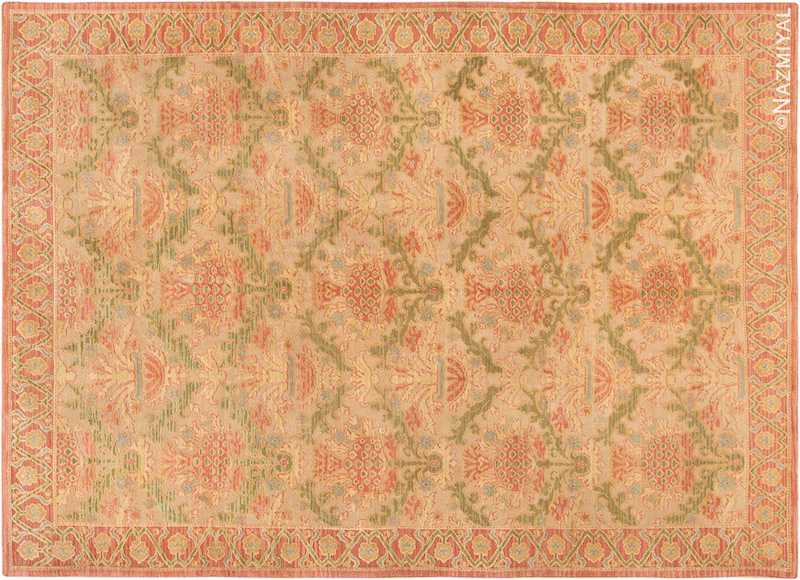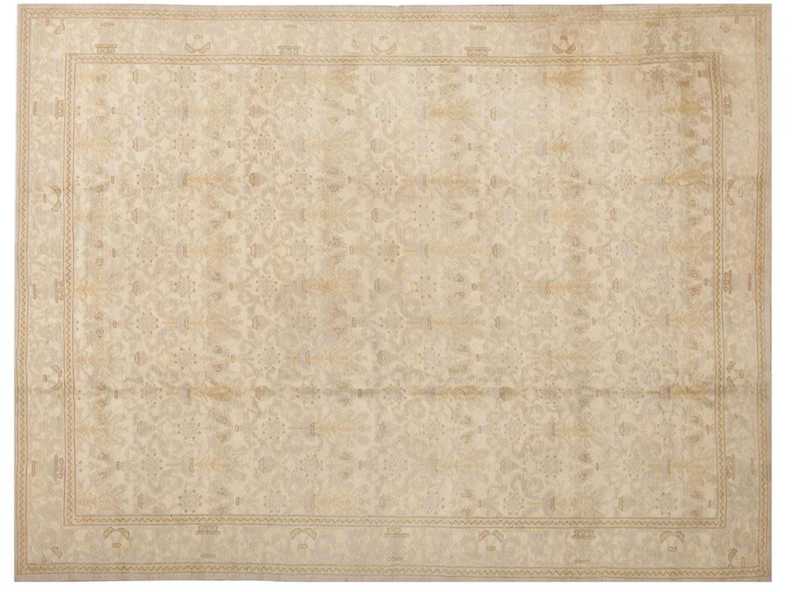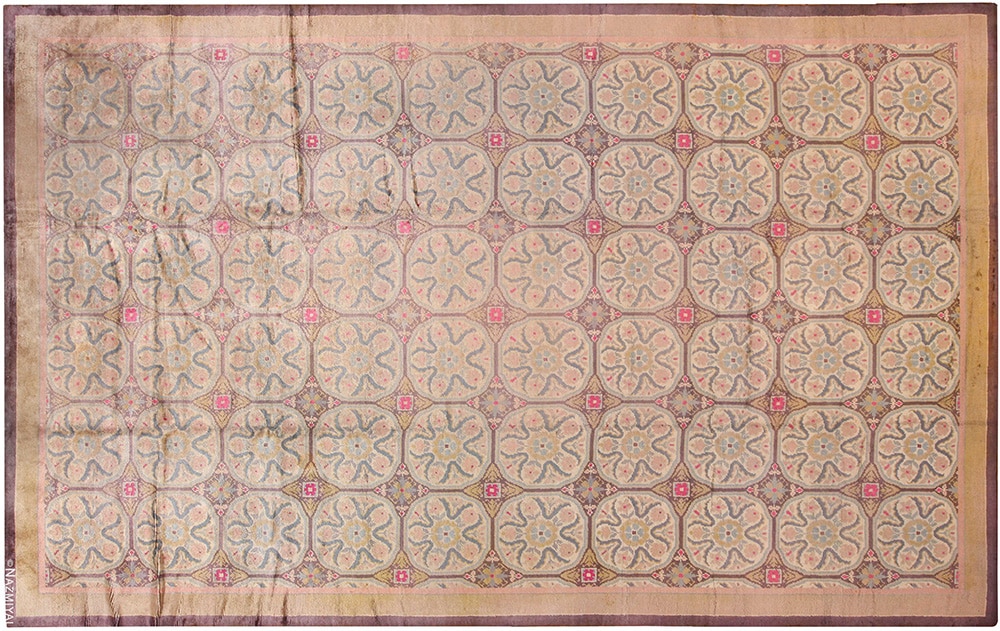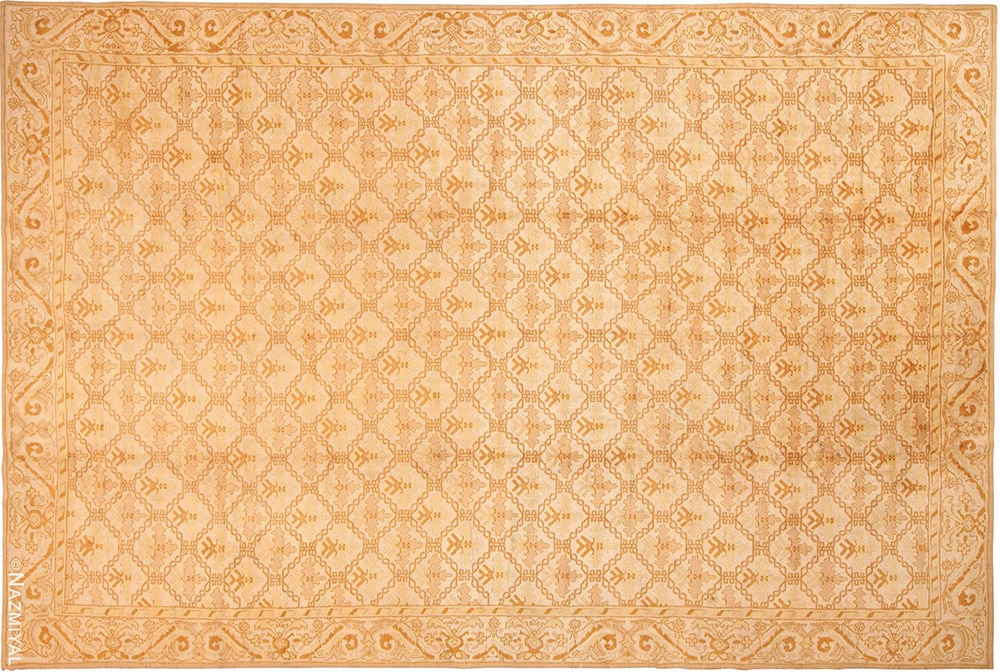Gorgeous Spanish Colonial Interior Design
So What Is Spanish Colonial Interior Design?
Spanish Colonial interior design refers to a style of interior design that incorporates elements from the Spanish Colonial period, which spanned from the 16th to the 19th centuries. This style is heavily influenced by Spanish architectural and decorative traditions and is characterized by its rich and ornate features.
Here are some key features, elements and characteristics of Spanish Colonial interior design:
- Adobe Architecture: Spanish Colonial homes often feature thick adobe walls, which provide insulation and help maintain a cool temperature inside the house. These walls are typically painted in warm earth tones.
- Courtyards and Patios: Spanish Colonial homes typically have central courtyards or patios, which serve as outdoor living spaces. These areas are often adorned with fountains, lush plants, and colorful tiles.
- Exposed Wood Beams: Ceilings in Spanish Colonial interiors often feature exposed wooden beams, which add warmth and rustic charm to the space. These beams are usually left in their natural state or stained in a dark finish.
- Terracotta Tiles: Flooring in Spanish Colonial interiors commonly consists of terracotta tiles. These tiles are durable and have a reddish-brown color that complements the warm color palette of the design style.
- Arches and Columns: Arches and columns are prominent architectural features in Spanish Colonial design. Arched doorways and windows, as well as decorative columns, are often seen throughout the interior spaces, adding a sense of elegance and grandeur.
- Ornate Details: Spanish Colonial design incorporates intricate and decorative details. This can be seen in carved wooden furniture, ornamental ironwork, and intricate tile work. The use of motifs such as scrolls, floral patterns, and geometric shapes is common.
- Vibrant Colors: Spanish Colonial interiors embrace vibrant and rich colors. Earthy tones like deep reds, yellows, and oranges are often used on walls and furniture, while blue accents are also prevalent. These colors reflect the warm and sunny climates of the regions where Spanish Colonial design originated.
- Antique Furniture: Spanish Colonial interiors often feature antique furniture pieces, such as heavy wooden tables, chairs, and chests. These pieces are typically made from dark, rich woods like mahogany or walnut and often showcase intricate carving and detailing.
- Textiles and Patterns: Textiles play a significant role in Spanish Colonial design. Look for vibrant patterned fabrics such as tapestries, rugs, and upholstery that incorporate traditional Spanish motifs like medallions, damasks, and geometric patterns.
Spanish Colonial interior design creates a warm and inviting atmosphere with its rustic charm, ornate details, and vibrant colors. It is a style that celebrates history, craftsmanship, and the fusion of Spanish and indigenous influences.
What Is Spanish Colonial Design?
Beautiful Spanish colonial design incorporates both the architecture style and the interior design style. The style is one of the oldest in America. It has been popular in the U.S. for the last 400 years since settlers from Spain settled in Florida, California, and much of the Southwest. The style has evolved over the years but remains just as stunning and aesthetically pleasing as ever. Let’s explore the beginnings of Spanish colonial interior design and how you can incorporate it into your own home.
What Are The Roots of Spanish Colonial Interior Design
The Spanish Conquistadors who settled in America brought architectural and design elements with them from their home country, hence the name of the style. Over the course of around 200 years, from the 1600s to the 1800s, the style began to spread throughout America and gain popularity. It brought inspiration from different eras of Spanish design, including Spanish baroque and Moorish revival. These are combined with the North American styles that were already in existence in the areas being settled. This included Mexican, Mayan, and Aztec influences as well.
While the style faded out of popularity in many areas of the country over the years, it still to this day remains very popular in California and is nearly synonymous with the architecture of that state. Many of California’s buildings are mission-style architecture, inspired by the churches built by Spanish settlers in California. There is even a style of building called a Monterey-style home, named for Monterey, California. This style of home comes from the Spanish colonial architecture of previous generations.
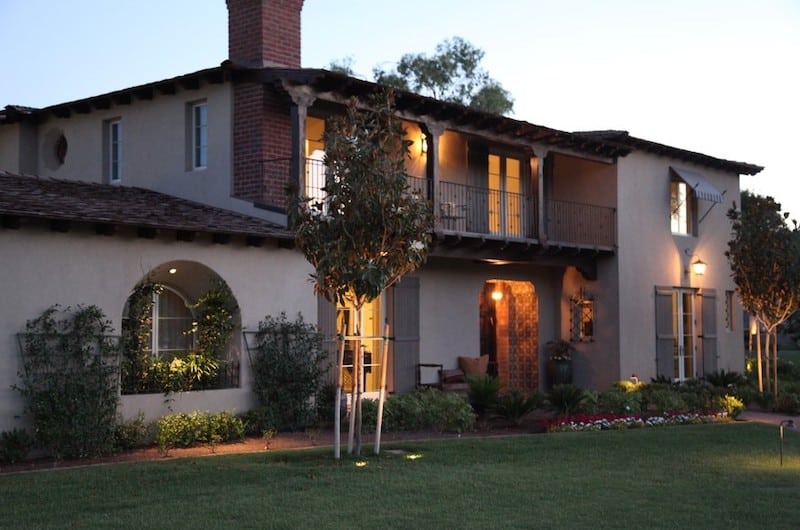
Monterey style architecture is a variant of Spanish colonial architecture.
Spanish Colonial Interior Design Elements
Visually, Spanish colonial interior design is similar to Mediterranean interior design. The color palette usually includes blues, greens, and neutrals like white and brown. Terracotta reds and oranges are huge in this design style. Whether it is literal terracotta floors and roofs or just terracotta-colored accents, you will almost always see this color somewhere in the design.
There is also lots of texture and visual depth in this design style. Stucco and plaster wall finishes provide visual interest. There are also elements of many different materials, such as wrought iron, stone, ceramics and pottery, and copper.
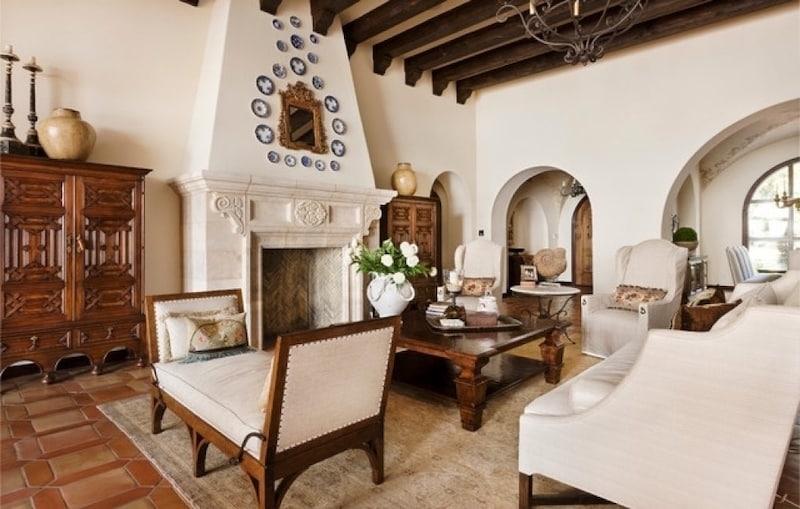
Spanish colonial design uses decor elements like pottery and vases.
Spanish Colonial Decor
Spanish colonial design uses items like pottery, urns, vases, and plants liberally in the design. Glazed tiles and mosaics, as used in Moroccan interior design, are sometimes seen as well. If it is a mission style home, there might be stained glass windows present. But perhaps most important to the design style is textiles. These are frequently hung on the walls as wall art. They are also draped over furniture like dining tables or living room couches. Of course, you will see textiles and rugs on the floor as well. Antique rugs from Spain make the design authentic and historical.

Spanish colonial interior design features rugs and textiles.
Even if your home isn’t built in the Spanish colonial architectural style, you can still emulate it in your own interior design. You can go big and design a whole room or home in the style, or simply pick and choose a few elements that speak to you and use those as inspiration. Whatever you choose, you can’t go wrong with Spanish colonial. A great way to incorporate either a little or a lot of the style is with a Spanish rug. Browse our curated selection below and begin your Spanish colonial decorating journey today.
Impressive Spanish Rugs from the Nazmiyal Collection:
This interior design blog about Spanish colonial interior design was published by Nazmiyal Antique Rugs.

